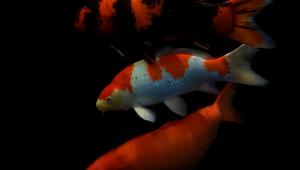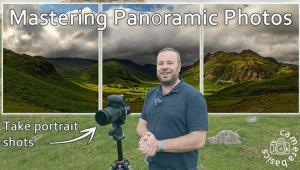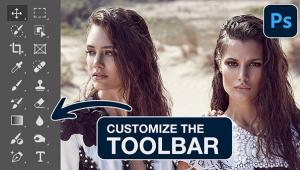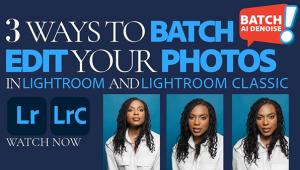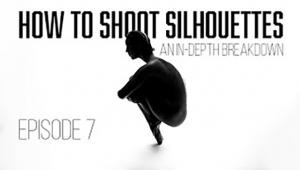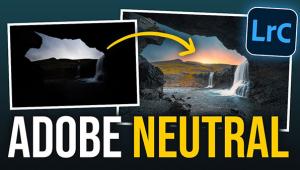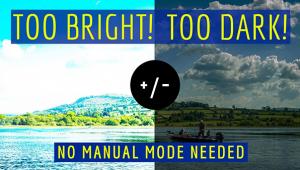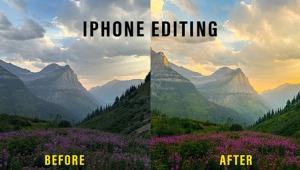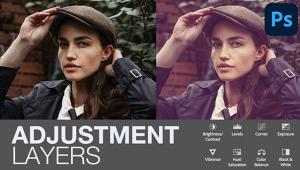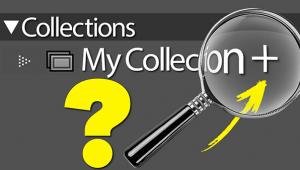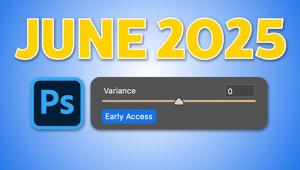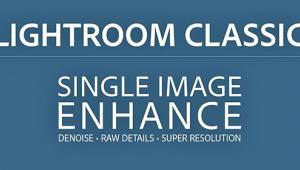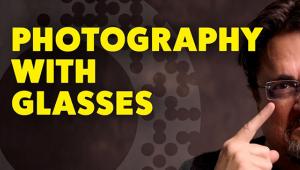Q&A For Digital Photography
To aid us in making Digital Help as helpful as possible, please be specific in your query and include components, including software, that you use. David says, “Make me guess the problem and I might guess wrong.”—Editor
Color Management Is A Workflow System
Q. I have been reading your Digital Help column for quite a while now and have just the opposite problem that most readers are experiencing. When I print a photo it always turns out too bright (from 0.3 to 0.7 EV too bright). I am currently printing with a Canon PIXMA Pro9500 Mark II on Canon paper using Canon Easy Print. I use different Raw processors from SILKYPIX, CS3, and Sony Image Suites. My photos are Sony Raw converted to JPEGs. My monitor is color corrected using a Spyder3Pro; my monitor is a new NEC 241 with ColorVision software. I used to think that my problem was using a laptop and the luminance (not adjustable) was set wrong, but the problem has followed me to my new monitor. The NEC is currently set at 90 CD/m2. I feel that there must be something I am missing. I am so tired of multiple printings to get something close to what I see on the monitor, especially after the amount of money I have spent on equipment.
Stephen LaCasse
via e-mail
A. From the description you provided, your workflow is not color managed. Apparently you are using the printer driver to manage color with “Easy Print.” Printer drivers, when they are managing color, re-edit your images to produce what the printer manufacturer engineered to produce a good print. Also, it is possible that by converting Raw to JPEG you could also be setting the image color space to sRGB, so most of your intention shooting Raw is defeated as both JPEG and sRGB reduce and change the color range of the image.
You have the camera manufacturer software to convert Raw to a standard format, so set output to TIFF or PSD and
if you have the choice in your camera choose to have it save Raw in Adobe RGB color space. Be sure Photoshop Color Settings are adjusted to use Adobe RGB (1998) as the RGB workspace profile.
Then print only from Photoshop and in the Photoshop print preview be sure to select Photoshop to manage color in printing. Then you must select the print profile for the paper you use and your Canon PIXMA Pro9500 Mark II printer, as well as choose relative colorimetric intent.
Few Scanners Fit All Needs
Q. I have 35mm Polapan, Type 55 negatives, 35mm T-Max negatives, and some transparencies I would like to scan. I am not that interested in doing it myself, but from what I see cost-wise for high-resolution 16-bit scans at various labs, I am reconsidering. I wish I could get the Hasselblad Flextight scanner, but can’t afford it. I looked into the Plustek, but it doesn’t do large format. I am not that keen on flat-bed for film. I am a perfectionist by nature and seem stuck not getting anything done. I live in Southern California and would like to know if there are labs you are familiar with that do this type of work without charging $35 to $75 a scan. Also, what about services that have high-resolution options for pros? Or, should I just do it myself with the Plustek and send out for large format? Just looking at scanner specs it makes one think that many scanners, even flat-beds, are OK, but I haven’t had good experiences in the past. If you would advise, or provide some insights into a direction for me, I would be greatly indebted.
Janelle Morte
via e-mail
A. I can understand your ambivalence because not that long ago consumer-priced scanners were really not very good. However, the Plustek OpticFilm 7600i that includes SilverFast scanning software is almost on par with much pricier scanners for 35mm film, excepting a few technical limitations. The Canon CanoScan 9000F for 120 medium format film, if SilverFast driver software is added, is also competitive with professional scan quality.
As far as professional service bureaus are concerned, you have to consider that their main clientele are agencies and presses that use CMYK image files for offset printing. So many of the service bureaus either do not or are not as experienced producing RGB files for fine art printing. The service bureau in Santa Barbara is in the high range of prices you mentioned, but I am sure there are many more in the Los Angeles area.
However, it is not just equipment that counts. Success is also the result of very practiced expertise in color correction and image editing. In large part, much of the cost of professional scanning is due to the high cost of very skilled and experienced scan technicians.
Personally, I find scanning, after doing it for 20 years, a fascinating challenge and enjoy the process because it is difficult. The more practice one gets the better the results, much like playing a difficult musical instrument.
Displays Must Be Adjusted, Calibrated, And Profiled
Q. I have just acquired a Dell U2410, after reading your Shutterbug review, as well as your earlier blog. The unit’s menu indicates it is running in RGB (which I assume is the best setting). The computer is a Dell PC.
My question is, the unit is noted as coming from the factory as “pre-calibrated.” I have a sheet filled with calibration data. In your opinion is this sufficient without buying additional hardware?
Also, as an aside, after connecting the USB cable to activate the monitor’s USB ports and card reader, the monitor shows up on the “My Computer” screen as a “Removable Disk Drive D.” Dell has no answer for this. Have you observed anything like this? It does not appear to affect the operation of the monitor or the computer, it just seems curious. The Dell monitor this one replaced did not do this, even though it had the same type of USB connection.
Ray Welch
via e-mail
A. The Dell U2410 is a potentially very good graphics display. The top button in the vertical row of display controls sets the color mode of the display, and for digital photography for printing and full-range output the mode to select is Adobe RGB; if you are doing images for publication on the Internet then you should select the sRGB mode. Other modes are for professional video or gaming, etc., and should not be used for digital photography.
All the factory “pre-calibration” does is set the color space gamut limits of the display, it does not calibrate the individual display and produce a calibration start-up .EXE file to provide conformity with ICC color standards. This is not opinion, it is a fact of ICC color management. Unless your U2410 is adjusted to a white luminance of 90.0 CD/m2 to match its brightness to paper white, and unless the display is calibrated by a color management display software and colorimeter, and then profiled, your computer is blind to the color you are looking at. Photoshop and any other color-managed application cannot function accurately and it will not be possible to produce color and brightness matched print output.
The USB connection irregularity you described is a Microsoft Windows problem; it is not the fault of the display. Probably the plug-and-play data in the display was triggered by the USB connection and Windows misunderstood the data.
If You Need It, Rent It
Q. I need to photograph a group of 250 people. In the past I’ve used my 4x5 camera to produce 11x14 prints on which all the faces are clear and sharp. But if I can now use a D-SLR it would be much more convenient to make multiple exposures and to avoid having to retest film, exposure meter, etc. Is there a megapixel number or other criteria that would assure adequate resolution? I have a Canon Rebel but if necessary could borrow or rent a more sophisticated camera. What do you think?
Roland Reisley
via e-mail
A. Yes, rent a current professional full-frame D-SLR camera for a day; it will be worth it in the results you obtain. The small chip and low resolution of even the latest Rebel would not be adequate for that job.
File Names Are Easy To Fix
Q. Apparently I did a stupid thing in several of my image backups. It looks as though I saved image files twice to the same back-up folders on external and internal hard drives. This resulted in images with two file extensions that will not open in applications such as SilverFast HDR. Is there a way to eliminate one of the two file extensions, e.g., .jpg .jpg or .jpg .tif so that I can gain access to these saved images?
Don Bremer
via e-mail
A. If you just use the Windows Explorer file utility, the file names are essentially just text information. So you can just modify the extension so it is either just .JPG or .TIF; but you need to look at the file sizes to identify which files are large .TIF files and which are smaller .JPG files. If you get the right extension with the file they are associated with they should open OK. Just don’t put .JPG with the larger .TIF files and vice versa. Good luck sorting it out. I would guess you have not lost anything.
Maybe You Don’t Need Custom Printer Profiles
Q. Your recommendation for the NEC monitor with SpectraView calibration was right on. Works perfectly with my MacBook Pro. What do you recommend for inkjet printer calibration (Canon 9000 and 9500)?
Glenn Sherwood
via e-mail
A. Unless you are really keen on perfection and use a lot of odd and different papers, I usually do not recommend most users get into custom calibrating a printer, paper, and ink. These days most printer and paper suppliers provide rather effective profiles for various paper/ink/printer combinations, and I would suggest in most cases you can’t do it yourself much better, although a few years ago that was not the case. And, there are good color management services that can provide rather precise profiles customized for printer/paper/ink combinations, and unless you are using many different papers, this is a preferable and more affordable option.
However, if you want to do printer profiling yourself, an intermediate system that is well designed for individual use is Datacolor’s Spyder3Print system. Take a look on their website at: http://spyder.datacolor.com/product-pp-s3printsr.php.
What the professional system color management shops probably use is the X-Rite i1Photo Pro system that has just been announced, or its previous version. It is a lot more costly, but also does a lot more for supporting a color-managed system. If you are interested in the best take a look at: http://xritephoto.com/ph_product_overview.aspx?ID=1464.
Always Start With The Simplest Software
Q. I am finally going to purchase the Canon 9000F as you suggested. However, one question: what SilverFast software should I purchase to couple with the Canon scanner? I will be using the scanner for negatives and slides.
Ralph Selitzer
via e-mail
A. If you have never used SilverFast, then I would suggest getting the SE version as it is inexpensive and the simplest to learn. You can upgrade the software to obtain more advanced features as you need them.
ANNOUNCEMENT
I am pleased to announce the latest 4.3 Edition to my eBook DIGITAL DARKROOM RESOURCE CD. The CD now contains 33 chapters totaling 399 pages in Adobe Acrobat .PDF format, providing easy-to-read text and large high-quality illustration. The CD is available for $20 plus $5 shipping and handling (US Mail if available). Ordering is as simple as sending a check or money order for $25 made out to me, David B. Brooks, and mailed to PO Box 2830, Lompoc, CA 93438.






